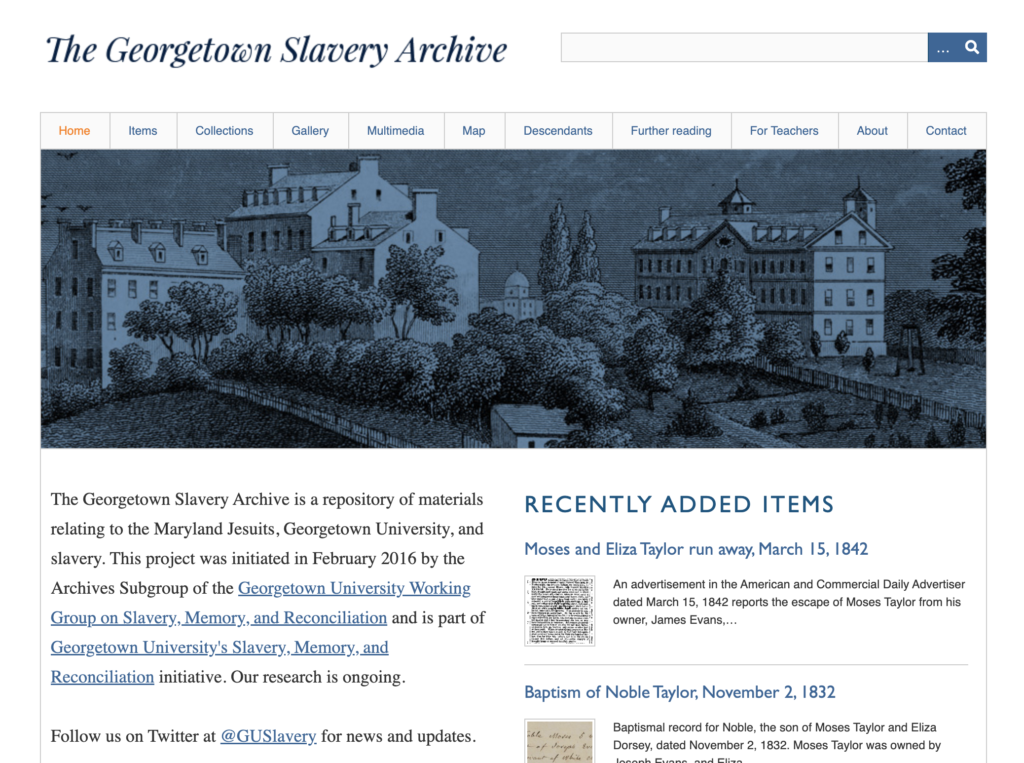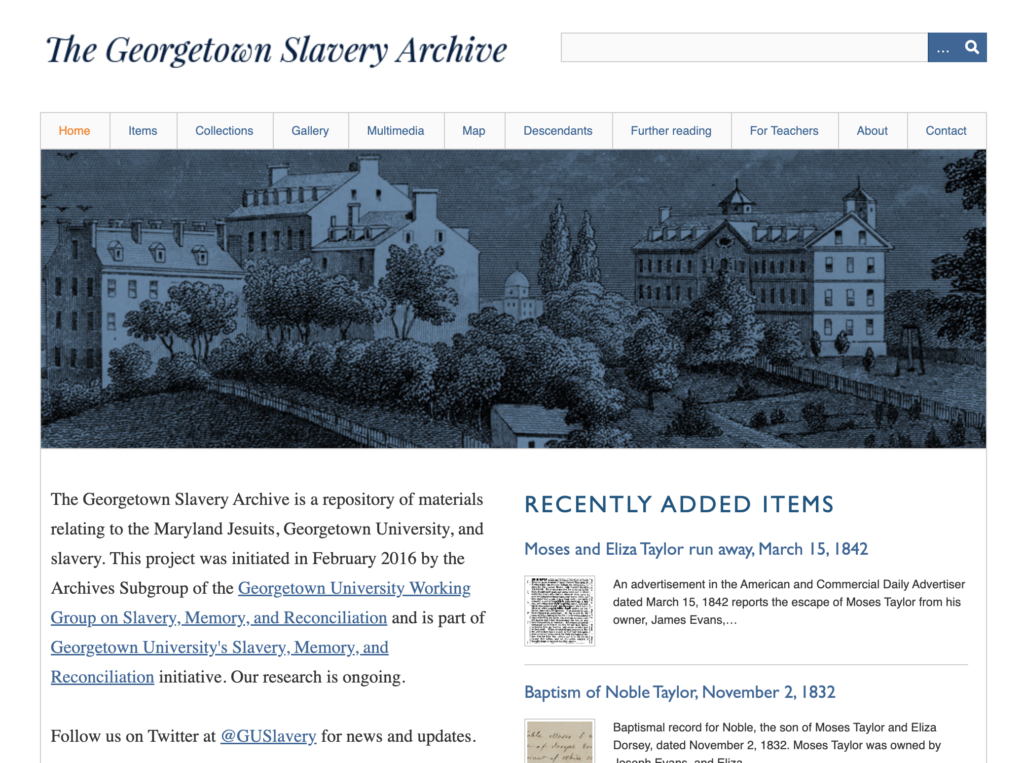Introduction to the Archive

Begun in 2016, The Georgetown Slavery Archive is an online archive made in an attempt to rectify and act as a memoriam to Georgetown University’s involvement in enslaving African American people. One of the goals of this archive is help share the stories of the people enslaved at Georgetown University through existing archival pieces, but also by connecting with descendants of those who were enslaved to help tell their ancestor’s story. Overall, the archive has a lot of digitized information about slavery at Georgetown and nearby Maryland Jesuit plantations.
Sources

This archive uses pieces found from a variety of sources, including the Maryland Province Archives of the Society of Jesus, Booth Family Center for Special Collections, and the Georgetown University Library. The primary sources in the archive come in a variety of forms, including photographs, numerous bills of sale between Thomas Mulledy, Georgetown University’s president, and buyers of the people Mulledy enslaved, and petitions for freedom. The archive also has records detailing the college students who purchased enslaved people and students avoiding tuition costs through the selling of an enslaved person. More recently, the archive has added the news articles following the “GU272” and their descendants, along with Georgetown University finally beginning to acknowledge the harm they caused.
Processes
Because this project it is a fairly straight forward archive, the main process used was the digitizing of historic documents. Historical letters and records have been photographed and uploaded, as well as transcribed into a digital text format, so they are easier to read. Additionally, links to podcast and videos on the subject have been embedded under the archive’s “multimedia” tab. Another main process of the archive was plotting pins on a digital map, which are linked to archive material.
Presentation

The most compelling presentation tool used in this archive is the interactive map that has been created. Users are able to zoom in and out, giving a broad picture as to where the effects of slavery at Georgetown have been documented. At each pin on the map, users can click to see the related document linked and dive deeper into this aspect of the archive. Other than the map, the presentation of the archive is mainly in a list format, where document titles can be clicked on to learn a more detailed history, which makes the data very accessible for broader use.
A Question
After exploring this project, one of the questions that arose to me was how can we make the user experience more appealing in a digital archive such as this one? I was able to appreciate all of the impactful information that has been archived, but without this explicit assignment, I think it may have been overwhelming to look through this archive. Most documents are simply listed out with their title, so it is hard to have a good feel for what the archive contains. Additionally, once you click a document, the user is first met with all of the Dublin Core information, and the photographs are at the bottom of the page. I think if this were reversed it could be more appealing.
Citation: Curated by Adam Rothman, Georgetown Slavery Archive, Georgetown University, Feb. 2016, http://slaveryarchive.georgetown.edu/.
